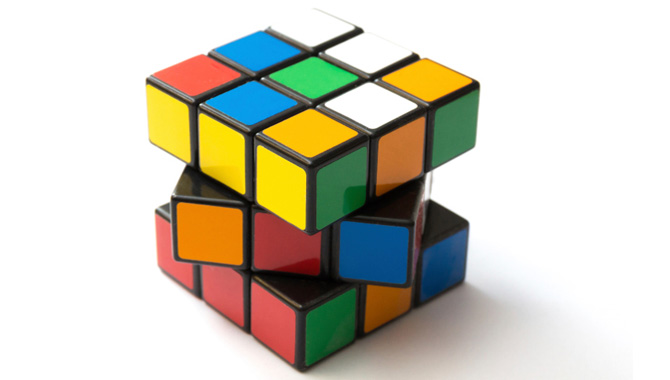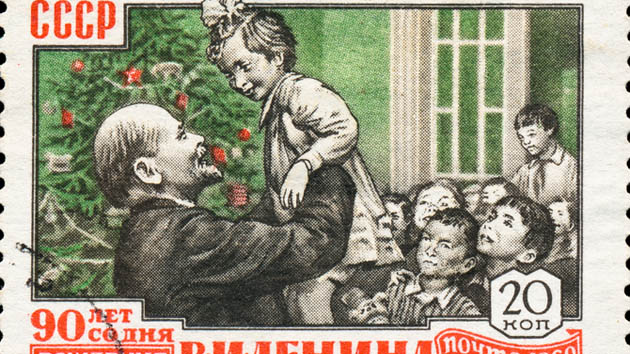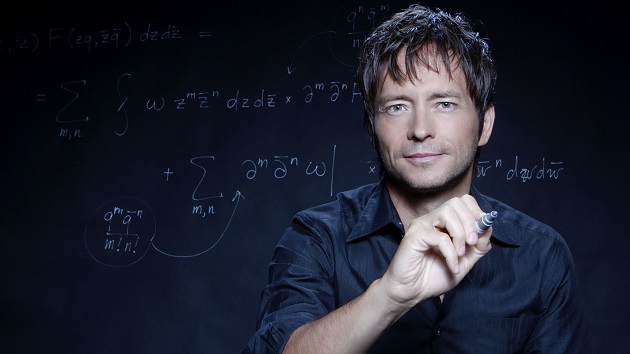
diserPiero/Thinkstock
Matt Parker isn’t your average stand-up comedian. He doesn’t draw his material from the banalities of everyday life, like many of his peers. His routine substitutes equations and mathematical concepts for toilet humor and political jabs. And the audience loves it.
So how did he become a mathematical comedian? “During the day, I was teaching math to teenagers, and then in the evening, I was telling jokes to drunk people in comedy clubs—which actually is a surprisingly similar skill set,” explains Parker on the latest episode of the Inquiring Minds podcast. He says he gradually began to work bits about “what it’s like to be a nerd” into his routines, and eventually “people started showing up expecting me to talk about math.”
“This is my ideal Venn diagram,” adds Parker. “If I can do math and stand-up at the same time, that’s brilliant.”
Parker has also just released a book—Things to Make and Do in the Fourth Dimension—packed full of clever jokes and a lot of really interesting math. What sets it apart from a number of other recent math books is the fact that the reader is encouraged to actually do some math, rather than just read about it. “I put in loads of puzzles, hands-on activities, things you can build,” says Parker. “And you can read the book without doing them, but if you want to, you can get your hands dirty.”
This is the appeal of Parker’s brand of math: He wants you to not just understand the concepts, but to be able to use them to impress your friends. Take a look at the video above, for example, in which he describes how to cheat your way into “solving” a Rubik’s Cube in fewer than three minutes. (It might even help you get into Princeton.)
If that isn’t impressive enough, try this hack: Tell your buddies that you have the magical ability to recognize fake credit card numbers. Have them write down a series 16-digit numbers, one that they copy from an actual credit card and several that they just make up. Now, starting with the first digit in each sequence, take every second digit and double it. If doubling a digit produces a two-digit answer, add those two digits together. You should now have eight new digits. Add up all these new digits along with the eight remaining digits that you didn’t double. If the result is a multiple of 10, it could be a real credit card number. If not, you have one of your friends’ randomly-generated foils. “The reason we put that strange pattern in there,” explains Parker, is that “when you type it into a website, the website can do that calculation. If the answer is not a multiple of 10, it knows it’s not a real card.”
Parker bemoans the fact that many people don’t realize how much math affects their daily lives. “They think that math isn’t helping when, in fact, it is!” he exclaims. “It’s making their lives possible.”
But even Parker took a detour in his education before committing to a life in mathematics—the “dark days” in college when he was studying mechanical engineering. “I got about halfway through a mech-eng degree before I realized that if I finished it, it would leave me dangerously employable,” he jokes. “And I also realized that what I really liked was just doing the equations—that it was the actual math behind the engineering that set my world on fire.”
So what is it about math that ignites Parker’s passion? “It’s basically like a murder mystery,” he says. What can make an otherwise decent thriller turn sour is if there’s a nonsensical ending—if the author just brings in a random character at the very end and calls him the murderer, the reader will lose interest in that author’s work. “But a good book, you get to the end and go, ‘Oh, that makes sense, there were hints all along,'” says Parker. “And that’s mathematics. You get to the end, you go, ‘That was hard work, but it’s great.'”
Listen to the full interview with Matt Parker below:













